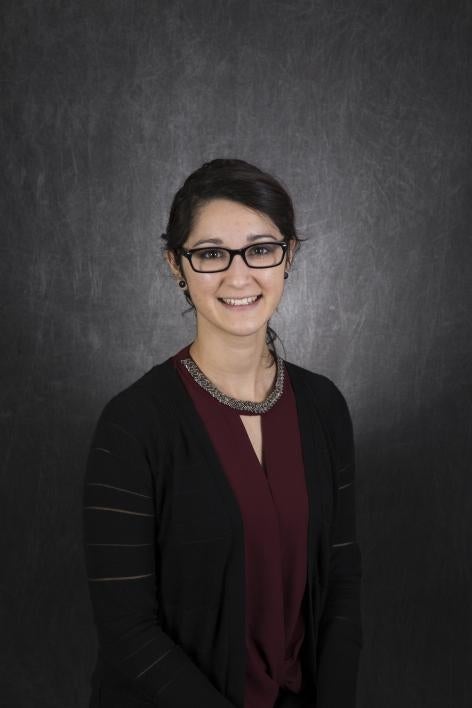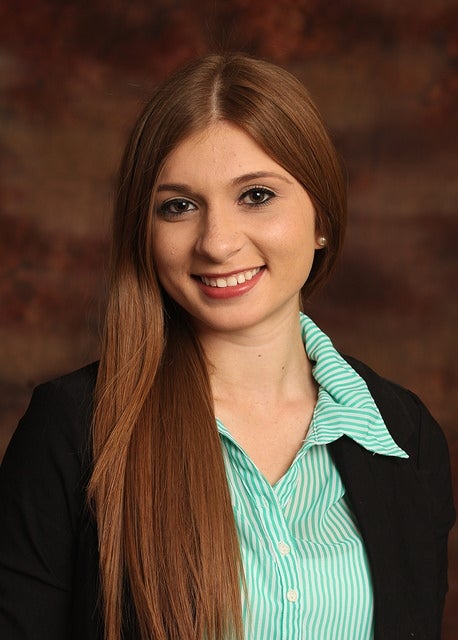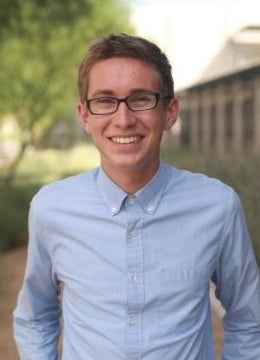A chance to set foot in a place they’ve never been before is beckoning three students to Caribbean countries for Arizona State University’s spring break.
These Ira A. Fulton Schools of Engineering students are traveling as part of ASU’s new Global Intensive Experience (GIE) programming.
Eric Arellano, a computer science freshman, is heading to Cuba for a close-up look at a country on the verge of increasing globalization.
Brianna Celaya, a civil engineering junior, and Leslie Amaya, a construction management sophomore, will be sampling life as a Peace Corps volunteer as they tour projects led by current Peace Corps volunteers in the Dominican Republic.
GIE programs pair a week-long study abroad with the option of taking a coordinated spring semester course. Arellano describes the format as taking a class that includes “the best field trip in the world.”
These programs are designed to expand study abroad access to students who might benefit from shorter travel duration or an alternate way of engaging in a global experience.
Celaya has long had a desire to experience another culture, but found it difficult to find the perfect time to go. “A spring break trip proved to be ideal,” she said.
Seeing the Peace Corps in action
Celaya and Amaya’s GIE is hosted by recruiters from the Peace Corps, and gives students the opportunity to visit communities with active Peace Corps projects in the Dominican Republic, many of which have a sustainability focus.
“We will observe the progress of projects that the Peace Corps has established in various communities and provide support,” said Celaya.
They will visit a project that focused on developing a vertical garden made out of wooden pallets and recycled materials in a rural community. A Peace Corps volunteer helped establish the project, which is now maintained with help from a local 12-year-old child.
The group will also travel to see a mountain water system established four years ago near the small village of Yasika.
Additional projects include helping at a tree nursery site in a deforested area and helping to lay the concrete foundation of a school structure that is constructed using plastic bottles, wire mesh fencing and a few pieces of wood.
The students are already familiar with these projects and the work that needs to be done thanks to online material and assignments in preparation for the trip.
“[As part of our orientation] we had a Skype video call with the directors of the Peace Corps who are currently serving in the Dominican Republic and who will help direct our program,” said Amaya.
Studying international political economy in Cuba
Arellano’s GIE includes home-stays with families and opportunities to interact with Cuban locals — from farmers and artists to entrepreneurs and government officials.
Arellano has been preparing for the trip with a spring semester course, POS 486: International Political Economy, which is offered in conjunction with the study abroad.
“International political economy is an old academic discipline that is making a current revival,” said Arellano. “It’s the idea that you can’t look at politics and economics by themselves, but rather you must consider how they are linked and influence each other.”
In the course he learns how institutions affect international economics affairs, including trade and labor practices. Through his travels Arellano says he will be experiencing international political economy on the ground.
As a computer science major with a minor in sustainability, Arellano is particularly interested in exploring how sustainability and technology interact.
He sees his travels in Cuba as a way to enhance his computer science education by “better understanding the human experience.”
“The reason I’m studying computer science is to leverage technology for social good — as a tool for improving the world,” he said. “And to leverage technology I need to understand the world, not just computers and science.”
Arellano is one of only 20 Flinn Scholars in his class across the state of Arizona. The Flinn Scholarship is a prestigious award given to Arizona resident students that aims to keep top talent in Arizona universities, and includes full tuition and living expenses, plus funding for a study abroad. Arellano plans to use this scholarship to fund a year-long study abroad in Guadalajara, Mexico during the upcoming academic year.
Benefit to students
This will be Celaya’s first time outside of the United States and Amaya’s first time traveling overseas. “I am most excited about experiencing another culture and am eager to gain knowledge of another culture’s norms and customs,” said Celaya.
She also sees it as an opportunity to consider various career paths after graduation, while learning more about non-profit work.
“I am hoping to find that my knowledge of engineering has a place in the Peace Corps,” said Celaya.
Amaya looks forward to “interacting with students in the program from a variety of different majors” and wants “to feel what it is to serve as a Peace Corp volunteer.”
She also sees the visit as an opportunity to enhance her construction management studies.
“I want to learn more about the Dominican Republic’s culture and how they recycle their resources. ... It will help me to experience the importance of sustainability overall, but also in the construction field,” said Amaya.
Arellano said that programs like GIE are exactly what brought him to ASU despite being raised by a family of University of Arizona fans.
“ASU was the clear winner for me and the main reason was opportunity,” said Arellano.
He wanted to attend a school that pursues and develops new possibilities for students, rather than only providing routine and commonly-offered opportunities.
He said the Cuba GIE program is the perfect example of this innovation.
“When I applied to college I couldn’t even consider traveling to Cuba because of the embargo. But as soon as the government’s restrictions began being lifted ASU created an innovative program and the opportunity is here,” he said.
Learn more about the Global Intensive Experience program and study abroad programs directed by faculty in the Fulton Schools of Engineering.
More Science and technology

ASU professor breeds new tomato variety, the 'Desert Dew'
In an era defined by climate volatility and resource scarcity, researchers are developing crops that can survive — and thrive —…

Science meets play: ASU researcher makes developmental science hands-on for families
On a Friday morning at the Edna Vihel Arts Center in Tempe, toddlers dip paint brushes into bright colors, decorating paper…

ASU water polo player defends the goal — and our data
Marie Rudasics is the last line of defense.Six players advance across the pool with a single objective in mind: making sure that…




